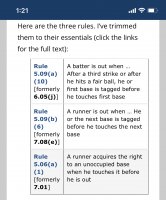Here’s a pretty good write up on the topic. Basically states the runner must beat the throw or tag and there are no ties in baseball. It’s an interesting read.
Tie Goes to the Runner?
I believe the author of that article fails to correctly interpret the three rules together. The first two rules do not contradict the third.
Here are the rules:

Under the first rule, a tie goes to the runner because the bag is not tagged “before” the runner touches it in the case of a tie. Thus, the runner is only out if the ball beats him.
Same analysis for the second rule.
The third rule says that the runner is safe (or, “acquires the right to an unoccupied base”) if he touches it “before he is out.” It does not say “before the ball arrives” as the author suggests. In fact, under the other two rules, it is clear that, in the case of a force play, a tie is literally “before he is out.” So, the three rules actually agree, and a tie, by rule, goes to the runner as a matter of simple logic.
Probably (if you will allow me to speculate), before high speed cameras and instant replay, umpires agreed that there was “no such thing as a tie” to discourage lazy umpiring and encourage vigilance about when the runner arrives via-a-vis the ball. This would explain the seemingly odd calls. But it does not change the fact that there is no rule stating that a base runner is out if he ties the throw to the bag.
Anyhow, that’s my take… as a practicing lawyer.



